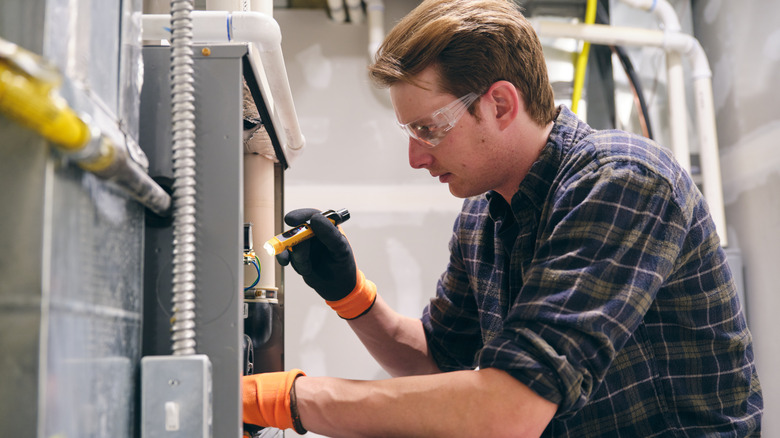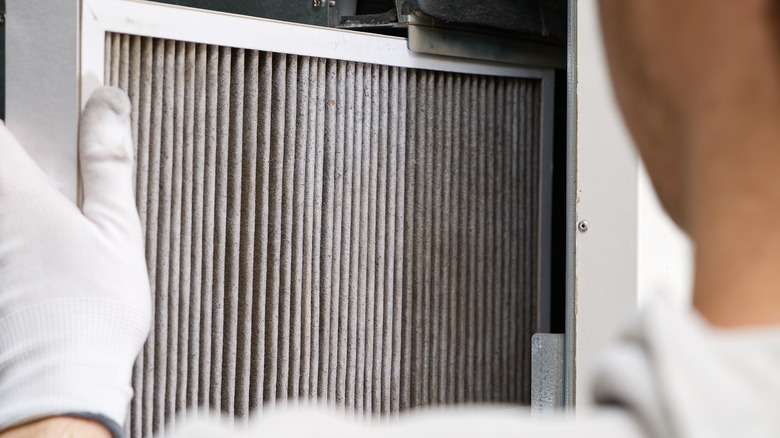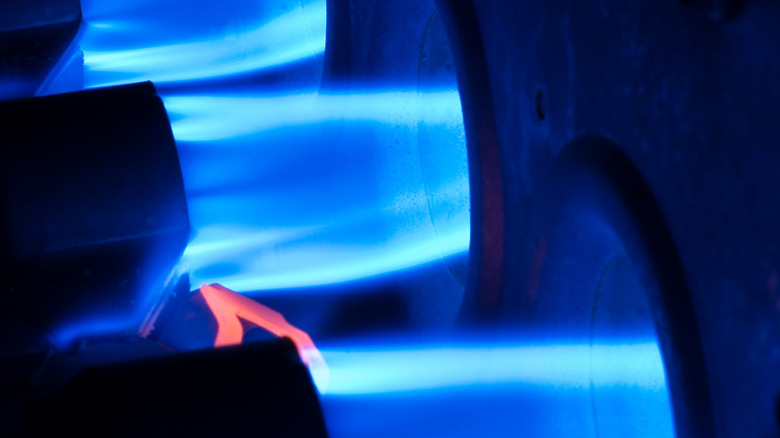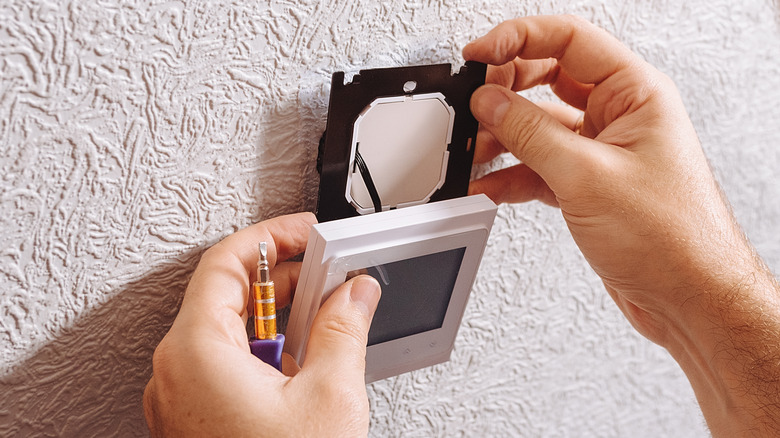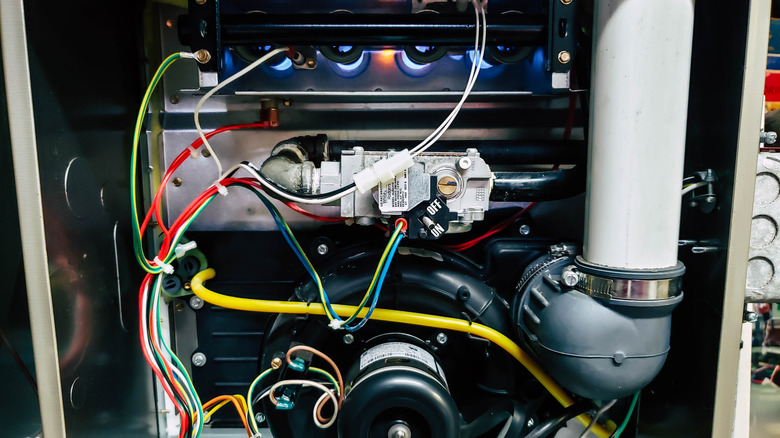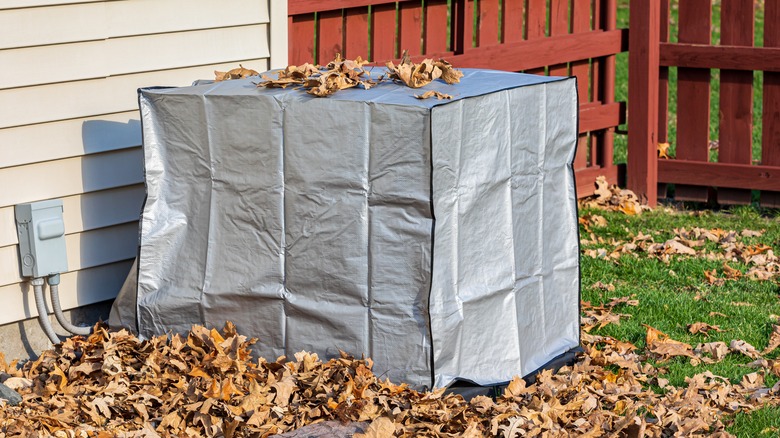The Dos And Don'ts Of Prepping Your Furnace For The Chilly Winter Season
As colder weather arrives in late autumn, you want to be confident about turning on your furnace and making your home warm and cozy. The best way to ensure your furnace is up to fall and winter's challenge is through taking preparation steps. Completing these tasks guarantees the unit is ready for the constant chill. You want to take steps that will benefit the performance of your heating system — and you want to avoid steps that may cause short or long-term damage to the system. Homeowners can do some of these preparatory steps themselves, while others are better for a service technician to handle.
As an added benefit, performing maintenance work should help your furnace last longer before you need to replace it. Because the cost of a new furnace can be several thousand dollars, the more work you can do to lengthen the lifespan of your unit, the longer you can put off this significant investment. Beyond enhancing its lifespan, maintaining your furnace can save you money in operational costs, as an efficiently running heating system needs less fuel or electricity to operate. Preparing the furnace for winter ensures that all its safety and protective features are operating at the proper level to reduce the risk of fire or a dangerous carbon monoxide leak, too. Learn more about the dos and don'ts of preparing your furnace to run perfectly all winter long.
Pay attention to the furnace's air filter
The air filter is a key component of any furnace or HVAC system. As the air flows from the return vents back into the furnace, the filter catches particles in the air before they reach the interior parts of the furnace. It catches dust, pet fur, and other debris. Keeping these debris out of the furnace helps the system run smoother and should improve your home's indoor air quality.
Do change or clean the air filter. As the air filter collects dust, it becomes soiled and needs changing. As this part becomes clogged with debris, it blocks airflow and makes the furnace work harder to generate the heated air you need. Normally, this is a job homeowners can do themselves, although you can call a professional to inspect and change it for you. Either way, don't let an air filter remain in the furnace too long. You need to change it regularly. Most furnace manufacturers recommend changing the filter every three months, although you may need to change it sooner if it looks dirty or if you have pets in your home.
Always inspect the combustion chamber and burners
Before you run the furnace regularly to deal with cold winter days and nights, you should have a visual inspection performed to check the materials for any cracks or damage. Cracked metal may occur with the furnace's burners and combustion chamber as the unit ages. However, even a newer furnace should have an inspection of the combustion chamber and burners before winter arrives, just in case of a manufacturing defect.
Don't put off repairs for a cracked combustion chamber. When you have this kind of damage in your furnace, you increase the risk of having a carbon monoxide leak in your house that threatens the safety of your family. Exposure to carbon monoxide can lead to death for people exposed to it inside the home. You might notice an odor of stale air or an overheating smell when you have a leak, but not everyone notices these odors. The best way to check for carbon monoxide leaks is to install a detector. You should ask a furnace service technician to visit your home and do a complete inspection on your heating system each year, which includes checking for cracks in the combustion chamber and burners. Furnace technicians have the tools necessary to test for and find this damage.
Check the accuracy of your thermostat
Even though the thermostat isn't a direct part of your furnace, it plays a key role in operating the heating system. The thermostat measures the temperature of the room and compares it to the desired temperature you set. If the measured temperature is too low, the thermostat signals the furnace to turn on and start blowing hot air through the system.
Do test your thermostat's performance. You need to be certain your thermostat is operating properly, or the furnace will not run efficiently during the winter. It won't be able to maintain the desired temperature, meaning your level of comfort is compromised. You can hire a professional to test the thermostat, or you can perform some tests on your own. Before winter starts, turn up the thermostat setting to a higher temperature than the current indoor temperature and see if the furnace kicks on as it should. Understand that old thermostats can fail, so if the unit isn't giving you accurate readings during your tests, you should swap it out for a new thermostat. Most people can install a new digital, analog, or smart thermostat themselves. You also can hire an HVAC professional to install it for you.
Test the furnace's operational performance
Making certain that the furnace is operating at the highest possible level of efficiency is an important task to take before winter begins. An inefficient furnace will experience more stress as it operates during cold weather, which could lead to breakdowns. It will need to use more energy, too, driving up the operational costs.
Don't try to test your furnace's operational performance yourself. Without the right diagnostic tools, it's hard to know exactly what is happening with your furnace's operation. You can hire an HVAC technician to run a diagnostic test on the interior of the system, which will reveal any areas of the heating system that are not running properly. Using diagnostics to inspect your furnace at the right time before winter arrives is important. It gives the technician the ability to pinpoint maintenance and repair tasks to improve performance during the coldest weather of the year. If you want to test your furnace without a diagnostic test before winter arrives, listen for odd banging or whistling noises, which could indicate an operational problem. If the furnace is constantly turning on and off, this indicates a short-cycling problem. Call a service technician to investigate and make any repairs before winter starts.
Take care of the AC condenser unit outdoors
Even though the condenser unit for the air conditioner (AC) is outdoors and not directly part of the furnace, it is part of the overall HVAC system. Before winter hits, you should make sure the condenser unit is ready for the poor weather and won't suffer damage.
Do cover the AC condenser unit to protect it. You can purchase a cover for the air conditioner unit to protect it from snow, sleet, and falling icicles. The cover should be breathable, moisture repellent, and fit properly. A plastic tarp is not breathable and can trap moisture underneath, which could lead to mold formation. As long as you have no chance of running the AC unit in the winter time, it's fine to cover it. Use your thermostat to turn off the AC unit before you cover it so you don't have to worry about having it kick on inadvertently after you cover it.
If you are operating a heat pump instead of a furnace, though, you should not cover the condenser section that's outdoors. The heat pump uses its outdoor components all year round. A cover traps moisture and heat inside, which can shorten the lifespan of the heat pump and negatively affect its performance. Call an HVAC technician for maintenance advice on heat pumps.
